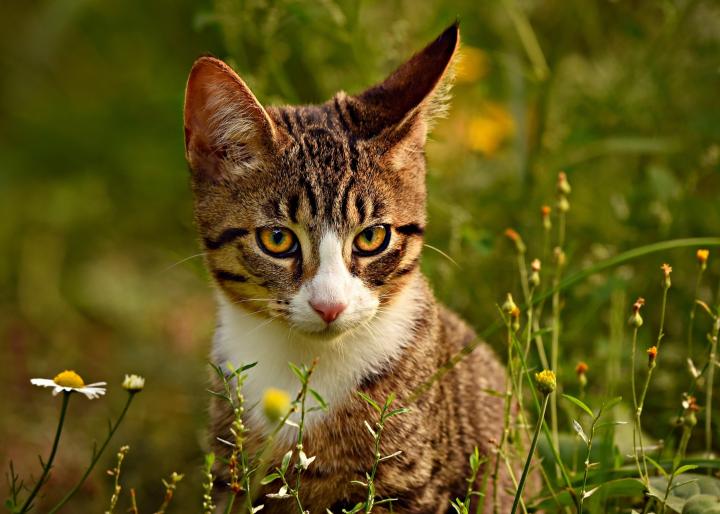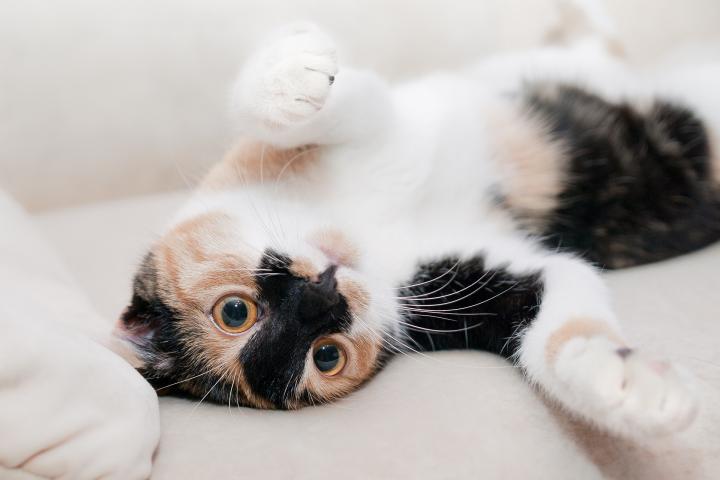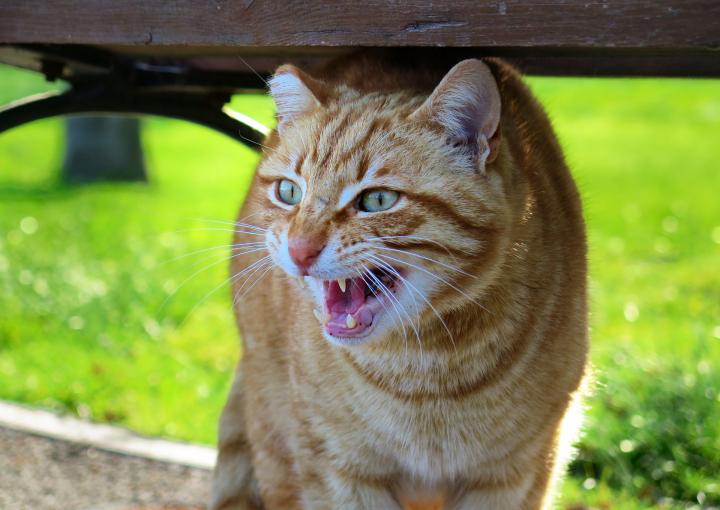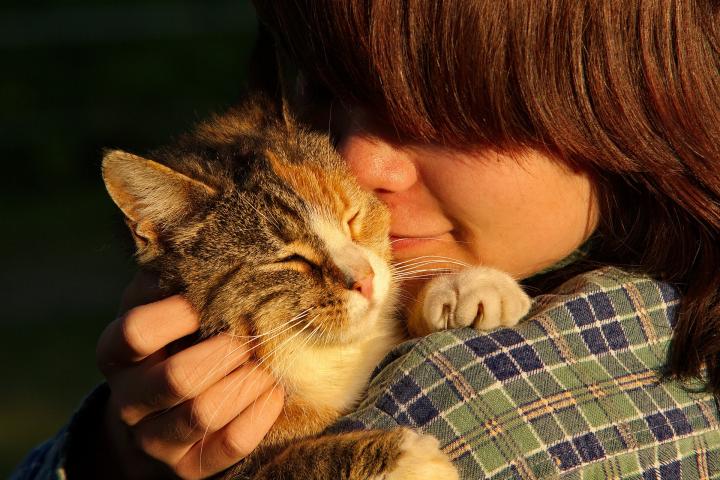
What does a meow or a purr mean? Find out what your cat is saying to you based on the meaning of cat sounds and body language.
A Guide to Cat Body Language and Communication
ADVERTISEMENT
What if my cat never meows?
He will only meow if i leave him in someone elses care. He is all white with gold eyes and 8 yrs of age.
Hi, Ann,
Some cats are naturally quiet, and will not meow very often (some cats also have a very quiet, or even silent, meow). If your cat never meows when you are around but does at a pet sitter when you are away, it might mean that he is asking for attention because he misses you. It can also be a sign of anxiety or stress because you are not there to comfort him and his routine has changed. A pet sitter should always be on the lookout for unusual behavior, because cats may meow not only to indicate loneliness, that the box needs cleaning, or that water or food need replenishing, but sometimes it may mean that they are not feeling well. We suspect that most times, however, a quiet kitty may meow at a pet sitter because it is lonely, bored, and/or unhappy with not having its owner at home and is expressing its frustration. If the pet sitter is able to, and the cat is comfortable with other people, then a little playtime and patting may help kitty to feel more at ease until you can return.
Hope this helps!
Any ideas on why my cat refuses to touch the floor? Literally bounces off the furniture now and it's getting worse has to be inside a covered something if inside. It's so wired
If your cat is avoiding crossing the floor or avioding certain areas and/ or bouncing across the floor in snnalm9st leading fashion, then this may be a sign of an infestation. Other signs of thos is constant scratching, biting, or grooming itself. If an infestation of say : Fleas. For example, use a flea comb and gently brush through the fur to see if fleas are observable on the comb. Do thisva few times. If insects such as fleas are found to be present. Then treat accordingly. Ask your vet for advice immediately.
Hope this helps in determining a potential cause for the peculiar behaviour.
Whenever I clean the litter box, my cat rolls around on his back on the floor next to it. Is this a thank you? Or some kind of objection? Or neither?
That's definitely a thank you! They're saying look how happy you're making me!
Maybe try communicating with your cat?
Our cats communicate differently with us than with other animals. They use great number of noises, sounds plus body language to communicate.
Let's take a cat's most common sound "meow" for and instance.
Have you ever noticed how the tone of "meow" changes when they express different states like hunger, anger, curiosity and happiness?
We know from research that cats have a language of their own.
In fact the meows you hear could be one of 20 different sounds they're making, all with slightly different inflections and behavioral responses.
Yes, meow means something.
What does it mean, you ask?
Good question. It's about the same as aloha in Hawaiian. The meaning changes.
Context matters hugely. Is it a mean meow, or a friendly one?
What about the cat's body action? Is he facing towards you, or away? Is the tail curled, or lying flat against the floor?
Depending on these points, "meow" could mean "let's watch a movie together" or "boy am I thirsty right now."
So getting the tone and body language right is critical!
The truth is you and I could understand what our cats are trying to say if we only listened and interpreted.
And both are quite easy to do.
Have you ever wanted to understand your cat? And respond back?
Then the guide described at https://talktomeow.xyz/will teach you the essentials of cat communication to open your ears (and your heart) into the fascinating world of feline communication, both verbal and nonverbal.
The guide is like the missing link that allows you to bond with your own feline friend as if he was a human child.
Yep
Some cats roll IN their litter box for various reasons. For one, they like the dust bath, to get rid of itches, parasites, etc. It is similar to cats rolling in the dirt outside. They will then wash the dust off.
In your kitty’s case, however, a more likely explanation is that he is happy to see the box cleaned and is re-marking it as his. As a cat rolls, it releases pheromones from scent glands along its body; these leave a message to other cats that “This is mine!” Even though there may not be other cats in the household, a cat may still like to claim his turf.
If your cat is purring at the same time, it most likely is saying thank you!
Recently I was diagnosed with sleep apnea which I had no idea I had as I always thought it was associated with being over weight or drinking heavily- before being diagnosed my car began waking me in the night by pulling my hair and biting my scalp - I truly believe she was waking me because I had stopped breathing - since using the cpap machine she no longer wakes me - I love her to bits and we are true soul mates - we found each other in Spain six years ago and my daughter and I absolutely adore her.












